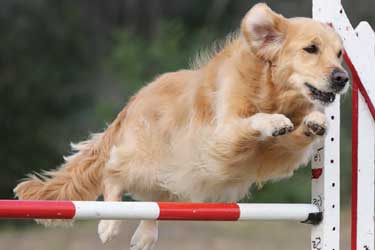Cruciate ligament surgery in general practice

To be successful, the independent small animal practice needs to identify untapped profit centers. In the past many practices referred cases out to referral centers or specialist, keeping everyday care in-house for a variety of reasons, but in today’s market it is vital for practices to add profit centers that enhance the practice revenue and provide the best medicine possible for our patients. The area that our practice has expanded has been in orthopedic surgery and associated pain management and rehabilitation.
Cranial Cruciate Ligament disease is the most common orthopedic problem in dogs. It is the most common cause of degenerative disease in the stifle and the most common cause of hind limb lameness. Surgical correction of the ruptured CCL can be accomplished in a multitude of ways. Every procedure has its advocates and, over the last two decades, some techniques have fallen in or out of favor based on limited study data. Multiple comparison studies suggest that the ideal treatment modality is yet to be determined.
In the 1970s-80s, the preferred method of stifle stabilization was by using an intracapsular repair with fascia or a portion of the patellar tendon. Extracapsular stabilization procedures began to be utilized in the early 1990s, providing good outcomes. Head-to-head comparison studies of intra- and extracapsular techniques suggested that the extracapsular Lateral Suture Stabilization (LSS) was superior to the intracapsular stabilization, causing the Lateral Suture repair to be widely adopted.
The more recent repair techniques of TPLO and TTA utilize geometric modification of the bones to stabilize the stifle. When LSS is compared to TPLO, both techniques result in favorable outcomes. The TPLO procedure may result in better outcomes in larger dogs, but the procedure does not halt the progression of osteoarthritis in dogs or reduce the evidence of radiographic changes of osteoarthritis. While the TPLO technique remains the preferred method among board certified orthopedic surgeons, it is a costly and this alone may be a limiting factor for many pet owners. Armed with this knowledge, using Lateral Suture Stabilization surgery for CCL repair in your general small animal practice can be a sound and valid service, providing your patients with a good option for management of cruciate ligament disease. Our clients appreciate that their pet will be able to have surgery in our hospital. Statistics show that 50% of dogs with cruciate ligament disease will require surgery on the second knee within eighteen months of the first surgery. This number increased to 80% if there is already radiographic evidence of degenerative joint disease in the stifle. Faced with the prospect of two surgeries, the economic factors cannot be ignored. For most patients, LSS is an effective and valid option.
Over the past decade, veterinary surgical instrument manufacturers have made great advancements in the development of tools specific for stifle surgery. Instruments and suture specifically designed for LSS have helped surgeons in general practice achieve excellent surgical outcomes. Complication rates continue to be less than 15%. When teaching the surgical technique, we have found that class participants feel comfortable mastering surgery with some practice. Veterinarians and surgical technicians should feel comfortable providing preemptive, multimodal anesthesia and pain management. There are many resources available to help general practitioners improve pain management for orthopedic surgeries.
Because the surgery is done in-house, your patient has the added benefit of immediate postoperative pain management and rehabilitation. The use of deep tissue laser therapy immediately after surgery and continuing the first two weeks after surgery will improve range of motion, weight bearing and speed healing. Many hospitals bundle postsurgical laser therapy and rehabilitation into the total cost of surgery, where we can work together with the pet owner to restore good muscle function and motion to the joint, while strengthening the other. Even a small general practice can provide simple rehabilitation with the use of therapy laser, a land treadmill, proprioceptive exercises and range-of-motion. The addition of postoperative therapy creates a partnership with your client and patient, as we work together to minimize the long term effects of cruciate ligament disease.
Our practice employs 5 veterinarians (3.5 full-time equivalent). We have one surgeon performing CCL repair, averaging one per week. In 2015, we performed 64 surgeries, resulting in a 6% increase in our gross revenue. Cruciate ligament disease will continue to be the primary orthopedic issue facing our canine patients.
Lastly, my advice to those of you who are thinking of how you can add profit center to your clinic but are concerned about diving into surgery, don’t be scared! There are several courses and training aids available that not only help you learn the procedures themselves, but also review how to successfully market and implement surgery into your clinic. Keeping patients in-house responsibly is a successful way to grow your practice and your patient care level!
About the author:
Jennifer F. Johnson, VMD, CVPP, Stoney Creek Veterinary Hospital, Morton, PA
Dr. Johnson graduated from the University of Pennsylvania's School of Veterinary Medicine in 1993. She became the sole owner of Stoney Creek Veterinary Hospital in 2007. Dr. Johnson's special interests include general and orthopedic surgery of all pets and exotics, along with diagnostic ultrasound.


Working Here
Our team members are encouraged to be the best they can be... at Covetrus we believe we impact one another.
Learn MoreNews & Events
FDA Cautions Pet Owners Not to Feed Texas Tripe Inc. Raw Pet Food Due to Salmonella, Listeria Monocytogenes
The U.S. Food and Drug Administration is cautioning pet owners not to feed their pets any of the Texas Tripe brand raw frozen pet food listed below because several samples of Texas Tripe raw pet food have tested positive for Salmonella and/or L. mono.
Careers
Are you looking for a place to let your talents shine? At Covetrus, we help our practitioner customers better serve their patients and take pride in providing the best customer experience possible. Search our open positions to see our available opportunities.
Newsletter
Stay current with what’s going on with Covetrus, subscribe to receive our newsletter and email communications. Subscribers will receive the latest information in practice management, sales and marketing, animal health, and more.



-3-(1).png?sfvrsn=2d806d73_0)

Leave a comment